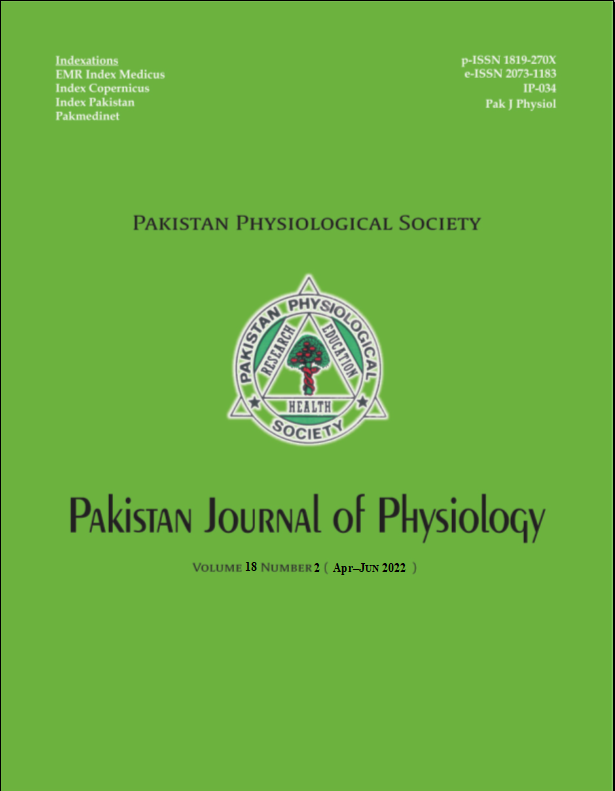CLINICAL PROFILING AND OUTCOME OF ACUTE POST-STREPTOCOCCAL GLOMERULONEPHRITIS IN CHILDREN FROM A TERTIARY CARE CENTRE
DOI:
https://doi.org/10.69656/pjp.v18i2.1367Keywords:
Acute Nephrotic Syndrome, Post infectious Glomerulonephritis, Post Streptococcal Glomerulonephritis, Glomerulonephritis, Renal, KidneyAbstract
Background: Childhood throat and skin infection caused by group A beta haemolytic streptoccus is very common and is associated with many complications. Objectives of this study were to document the clinical profile of children with Acute Post-Streptococcal Glomerulonephritis. Methods: This cross-sectional study was conducted in Paediatrics Department of Ayub Teaching Hospital Abbottabad from March 2019 to March 2020. Total 56 patients fulfilling inclusion criteria were included in the study, data was recorded and analysed on spss-20. Descriptives recorded and p-values calculated. Results: APSGN was common (53.57%) in 7–11 years age group with a peak at 9 years. It was more common in males (62.5%). Minimum age was 3 years and maximum was 16 years, mean age being 8.72±2.762. Preceding sore throat triggered immune response in 33.9% in comparison with past streptococcal skin infection in 19.7%. ASO titres were raised in 42.9%. Hypertension was most common presentation affecting 96.4% patients followed by oedema in 67.9%. Atypical presentations of seizures and hypertensive encephalopathy were observed in 28.6%. Gross haematuria and microscopic haematuria occurred in 41.1% and 42.9% patients respectively. Majority (87.5%) did not develop acute kidney failure. Conclusion: APSGN in children has a male predominance. Sore throat as antecedent infection affects older children and is more common as compared to skin infection in triggering this immune response. Atypical manifestations, cardiac and neurological complications including emergencies such as status epilepticus should be watched for.
Pak J Physiol 2022;18(2):43?6
Downloads
Downloads
Published
How to Cite
Issue
Section
License
The author(s) retain the copyrights and allow their publication in Pakistan Journal of Physiology, Pak J Physiol, PJP to be FREE for research and academic purposes. It can be downloaded and stored, printed, presented, projected, cited and quoted with full reference of, and acknowledgement to the author(s) and the PJP. The contents are published with an international CC-BY-ND-4.0 License.











